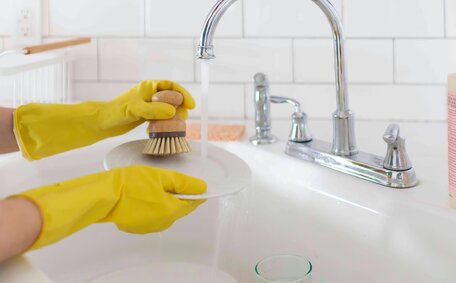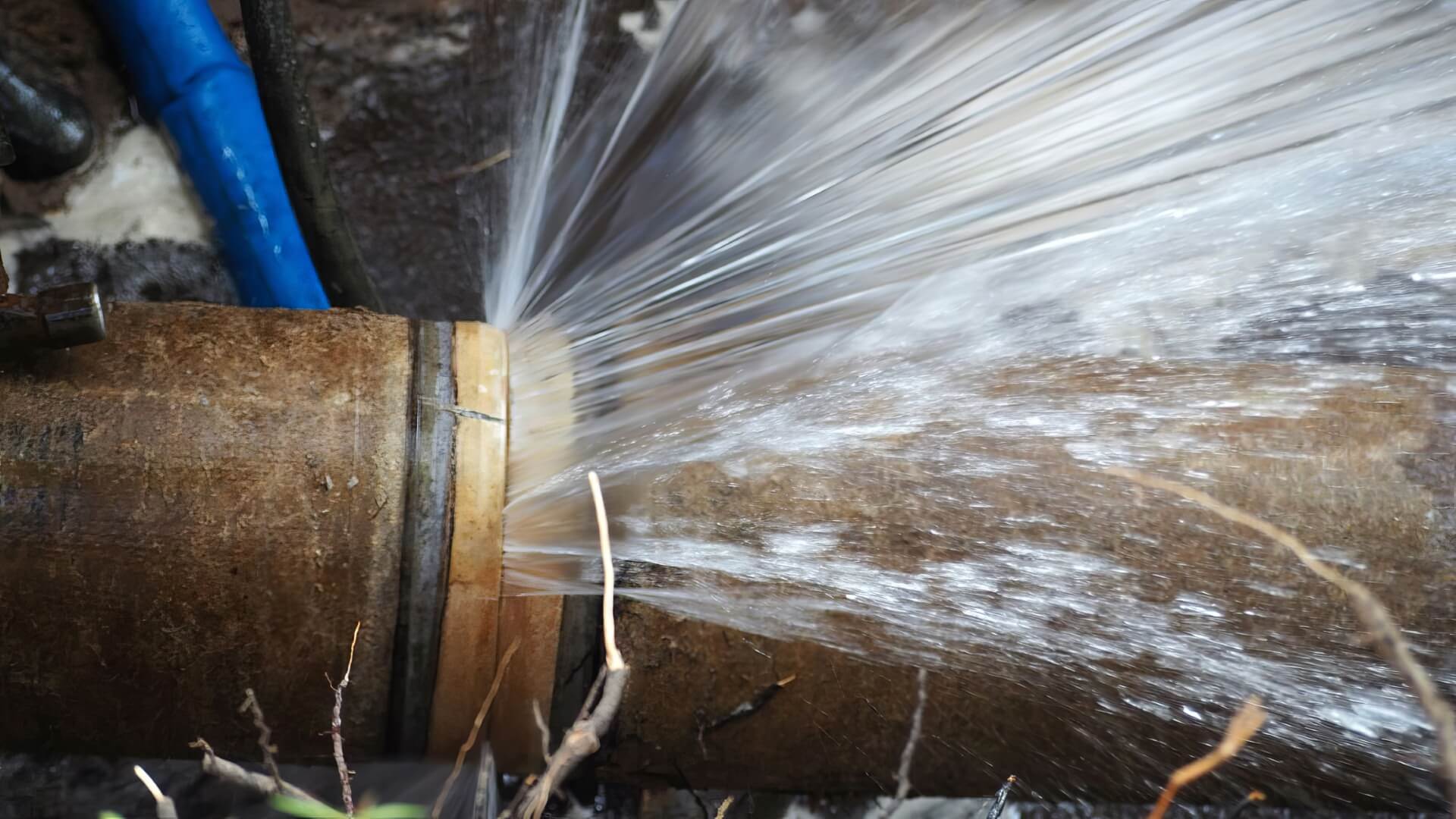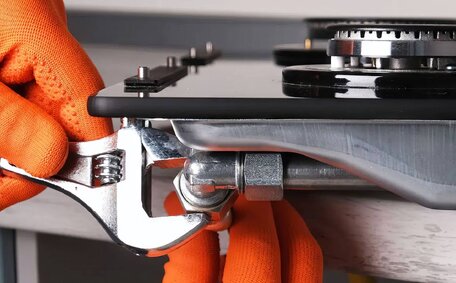What is a Gas Regulator and What Does it Do?
An LPG gas regulator is critical for maintaining gas safety, as it regulates and directs gas flow within the system. The regulator’s main task is to moderate gas pressure from the cylinder to a stable level suitable for appliances such as stoves and heaters.
The pressure regulator lowers the high pressure of common gas from the incoming supply to the level that your appliances need for safe operation. It ensures a consistent gas flow, preventing spikes that could damage equipment or cause dangerous leaks, underscoring the importance of a properly functioning regulator. Many regulators have an automatic changeover feature in multi-stage systems, which carefully reduces gas pressure in stages to optimize appliance performance.
By moderating pressure and maintaining control over the gas flow, your propane grill’s regulator plays a crucial safety role in your propane system, promoting secure operation. They prevent problems such as those caused by a faulty propane regulator like weak flames, inconsistent flame due to poor fuel flow, gas leaks from overpressure, or damage to your rv appliances and piping systems. Ensuring you conduct your gas grill maintenance properly safeguards against potential perils and guarantees consistent gas delivery to your grill.
How Long Should a Gas Regulator Last?
Gas regulator manufacturers commonly suggest that regulators can last up to 25 years on average. Nonetheless, consistent checks and the necessity to inspect regulator performance are imperative to extend the service span of all your common gas grill regulator.
It’s recommended to have a professional inspect your regulator every five years, coinciding with your propane tanks’ certification. During inspections, technicians will look for signs of damage wear, corrosion, and leaks that could indicate when your regulator may have become compromised, pointing to potential problems. Replacement becomes essential when a regulator needs attention, as a bad propane regulator hampers the normal flow of gas due to imperfections or after a substantial period of service.
You can also keep an eye on your setup and discern how tell propane equipment is malfunctioning by noting any strange symptoms. Noting a sign faulty such as a low flame, abnormal colour changes, unusual sounds, or lack of response when igniting appliances could signal a need to examine the regulator.
While a quality regulator should last up to 25 years, factors such as lack of maintenance or damage to the propane tank valve can shorten this time by letting degradation seep into gas system components. Yet with diligent attention and routine checks, you should check out your gas regulator to ensure it faithfully administers gas from the tank across a long time.
Common Signs of a Faulty Gas Regulator
Several signs may indicate the need to replace a malfunctioning propane regulator:
- Uneven burner ignition - If not all burners ignite evenly, it could suggest that a double stage regulator is failing to maintain consistent gas flow and pressure.
- Yellow flames - Displaying yellow instead of a stable blue could indicate a problem regulator complications affecting gas pressure.
- Popping noises - Loud popping or hissing from appliances can signify grill regulator issues when the pressure gas becomes erratic or exceeds safe margins.
- Smell gas - If you detect a gas smell near appliances, it may indicate leaks resulting from excessive pressure that a faulty regulator fails to control.
- difficulty igniting appliances - Challenges in igniting gas grills consistently may stem from insufficient flowing gas pressure through the regulator.
If your encounter the initial symptoms indicating a faulty regulator, such as erratic pressure propane, it’s time to promptly liaise with a technician who could confirm if you need do gas tests or replacements for your gas system.
Testing Your Gas Regulator
Testing the regulator’s propane flow is crucial to confirm its functionality and prevent dangerous gas pressure surges; therefore, always turn off the gas supply before inspection. Peruse these detailed steps for checking your regulator and ensuring gas flowing correctly through your system:
- For utmost safety, turn off gas supply completely, ensuring no gas flows into the regulator, and power down all appliances.
- Remove coverings such as the bypass cap from the regulator to ensure clear access for inspection.
- Leak test: Use a 50/50 soap and water solution with a brush or spray bottle on each regulator connection point, valves, and seals if you suspect compromises. Growing bubbles indicate a gas leak.
- Perform an inlet pressure test: Connect a pressure gauge before the regulator, turn on the gas supply, and gently open the inlet valve, watching for the pressure to decrease and then stabilize.
- Adjust the regulator to obtain the right pressure for efficient combustion and monitor the flame’s colour and height at each burner. Blue flames emitting correctly from the burner ports indicate proper gas regulation.
- Leaks, inconsistent pressure, or abnormal flames indicate that you should replace the regulator with a new, up-to-standard unit.
While these steps are useful, it’s crucial to seek immediate professional help if you encounter any issues with gas control.
When to Reset vs. Replace Your Regulator
Deciding whether to reset or replace a defective gas regulator depends on the issues identified during testing.
If you encounter minor issues, such as:
- Slight inconsistencies in flame height or burner ignition
- Occasional popping sounds
- A small drop in outlet pressure during flow-pressure test
Resetting can often resolve these minor regulator performance problems:
- Shut the gas line and disconnect appliances from the power source.
- Remove and reattach the regulator, ensuring connections are tightened securely.
- Now turn the gas supply back on slowly while checking for leaks.
- Relight appliances and observe for proper flame height and colour.
However, should tests uncover issues that cause concern, installing a new regulator becomes imperative to mend continuous gas leaks, markedly uneven flame activity, incessant popping sounds, or notably erratic outlet pressure indicative of a bad propane regulator.
Replacement should take place when your gas valve or regulator becomes faulty or shows its age and degradation after 15-20 years of service. A faulty or damaged regulator can lead to high gas pressure and too much gas flow, creating major safety hazards.
For replacements, enlist a licensed gas fitter to install a new, approved regulator suited to your system and appliances. Properly sizing and installing regulators is crucial for managing gas pressure and reducing risks.
How to Safely Replace a Faulty Gas Regulator
Replacing a faulty gas regulator yourself is extremely dangerous and should only be attempted by qualified professionals. However, being aware of the fundamental procedure is a critical safety feature, necessary for any responsible homeowner to ensure safe execution.
- Turn propane tank off gas supply to the off position and alert every household member to refrain from attempting to use gas appliances.
- Disconnect all gas appliances from the supply lines.
- Remove the faulty regulator and install the replacement, ensuring all connections are tightened securely.
- Check for leaks by applying a soapy water solution to all joints - growing bubbles indicate leaks.
- If no leaking is apparent, gradually reintroduce the main gas supply, especially if the flow isnt working as predicted.
- Reconnect gas appliances one by one, igniting the pilots/burners and observing flames for proper height and colour.
- If you notice any irregular gas flow, flames, or leaks, contact a gas technician immediately.
Regulators are key to appliance safety, managing gas pressure accurately. A failing regulator might lead to dangerous breaches, explosions, and carbon monoxide risks. Allow only qualified technicians to assess, replace regulator parts, or repair your gas regulators.
Proper Maintenance and Safe Handling
Regular maintenance of propane regulators is vital for safety and efficiency. Once annually, visually inspect the regulator for damage, wear, corrosion, any loosened elements, or leaks. Check that all fittings are tight and the vent is clear of obstructions.
If your regulator is over 15 years old, it’s also a good idea to schedule a professional flow-pressure test even if it’s functioning normally. This can detect performance issues not visible externally. The regulator should be replaced every 20 years or sooner if issues are uncovered during inspections.
When handling your regulator, never try to force or overtighten fittings. You should always use only approved sealants if needed and ensure connections are gas-tight. also, keep the vent clear and guard against water, dirt or insect ingress.
Avoid touching any regulator parts with oily hands or tools. Oil and grease residue can damage rubber gaskets. Check surrounding areas for flammable debris too.
With proper maintenance like annual inspections, protection from environmental exposure, care in handling, and replacement once obsolete, your gas regulator should provide many years of reliable, safe gas flow regulation.
When to Call a Professional
There are certain common issues with gas regulators that necessitate professional intervention for accurate diagnosis and repair:
- If testing reveals consistent gas leaks, continuous popping noises from appliances, highly unstable gas flow or pressure, or very abnormal flame behaviour, immediately shut off the gas and call a technician. These can signal dangerous regulator malfunctions.
- If your regulator is over 15-20 years old, even if it is still functioning normally, replacing it is highly recommended to prevent obsolete units from failing unexpectedly.
- If your regulator shows external damage like missing parts, cracks, corrosion, or evidence of overheating, replacement by a professional is needed to ensure the new unit is fitted safely.
- Only qualified gas technicians have the expertise to accurately assess regulator issues, perform diagnostics like leak and flow testing, remove old regulators, and install approved replacement parts.
- They also have specialised equipment to conduct thorough checks and resets before appliances are reconnected to gas supplies.
Chatswood Plumbing employs fully certified and licenced gas specialists who can address all regulator servicing and replacements for your home or business. For reliable regulator inspections, repairs and new installations, contact our team today on 1300 349 338 or email [email protected].






